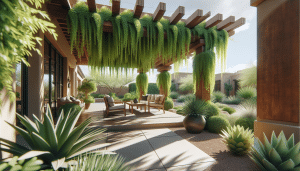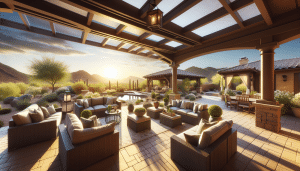Installing a pergola is a great way to utilize your home’s outdoor space. Installing a pergola doesn’t just properly use your outdoor space; it also adds to the curb appeal of your house and increases its value in the market.
With so many benefits of pergolas, getting one installed on your property seems like a no-brainer, but before you jump into it, make sure that you learn everything that there is to learn about pergolas before getting a pergola installed.
1. Need for a Permit
Installing a pergola does not usually require a permit from the local building department, but it is always better to be safe than sorry. Different states have different regulations. Therefore, to avoid any unpleasant situations with the authorities in the future, make sure to check what the law of your state says. Get a pergola installed if a permit isn’t required, but in case it is needed, make sure you have a permit in hand before installing a pergola on your property.
2. Check the Utilities Beforehand
You will end up incurring massive costs if you do not get the utilities checked before digging the ground for post holes. Before you get a pergola installed, you need to know where the electrical, sewer, and water lines are. If you accidentally break any of these lines, you will not only have to deal with a lot of disruption, but you may have to face legal issues – not to forget the huge costs that will go into getting the utility lines repaired and restored.
3. Know the Frost Level in Your Area
The frost level refers to the level to which the ground freezes. It is important to know the frost level in your area before getting a pergola installed so that you don’t end up with the consequences of a frost heave. Make sure that you have this information beforehand so that you don’t end up putting your pergola at risk.
4. Choices of Materials
You should choose the material for your pergola very wisely, taking into consideration factors like cost and durability. Wood is the most commonly used material for building pergolas. Different varieties of wood offer varying degrees of insect resistance and aesthetic appeal.
Cedar and redwood are some of the most beautiful of all wood types but also some of the most expensive materials for pergolas. Pressure-treated pine is more readily available and a lot more affordable. You can also consider synthetic, modern materials if your budget allows.
5. Pergola Price Ranges
You may find yourself day-dreaming while looking at ultra-modern and stylish pergolas on the internet. One of the most important factors that you should know before jumping into getting a pergola installed is the price range. You will find pergolas in different price ranges. Make sure that the type of pergola you want falls in your budget to avoid any inconvenience in the future.
Summary
There are certain things that you should know before installing a pergola. This includes the need for a permit, the materials that you can opt for, the estimated cost, location of utility lines, and the frost levels in your area.




